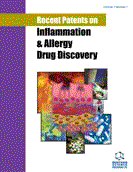Abstract
Since the 1990s, autoimmune pancreatitis (AIP) has been increasingly recognized as a special type of chronic pancreatitis. Clinically, AIP patients commonly present with jaundice, weight loss and abdominal pain. Radiologically, there is diffuse or focal enlargement of the pancreas, often with narrowing of the pancreas and bile duct. Histologically, AIP is characterized by periductal infiltrates of lymphocytes and plasma cells, cellular fibrosis and obliterative phlebitis. Recently, two types of AIP were distinguished and called type 1 and type 2 AIP. They share the symptomatology and some histopathological features such as periductal lymphoplasmacytic infiltrate and storiform fibrosis, but differ in a particular duct change, called granulocytic epithelial lesion, which characterizes type 2 AIP. In addition, type 2 AIP usually has none or very few ( < 10 cells/ high power field (hpf)) IgG4-positive plasma cells. Clinically, type 1 AIP patients are roughly 10 years older than type 2 AIP patients, show a slight preponderance of men and reveal extrapancreatic manifestations of IgG4 associated systemic disease in approximately 50% of the cases. Type 2 AIP patients frequently show an association with inflammatory bowel disease and usually lack serological elevation of IgG4. The main differential diagnosis of AIP is pancreatic ductal adenocarcinoma. In many instances the diagnosis of AIP can be made by imaging together with serological markers. In difficult cases, particularly in type 2 AIP, the diagnosis has to be established by core needle biopsy. Both type 1 and type 2 AIP patients respond to steroid treatment, but a significant proportion of type 1 AIP patients suffer from recurrence of the disease. We describe the clinical and histological features of the two types of AIP as well as the treatment. In connection with pathogenesis and diagnosis, recent findings on immune complex deposition, autoantibodies in AIP and relevant patents are discussed.
Keywords: Autoimmune pancreatitis, type 1, type 2, histopathology, clinical features, diagnosis, treatment, autoantibodies, AIP, granulocytic epithelial lesion, core needle biopsy, Immunoglobulin G4, IgG4, pancreatic ductal adenocarcinoma, ductal adenocarcinoma, abdominal pain
 7
7


















